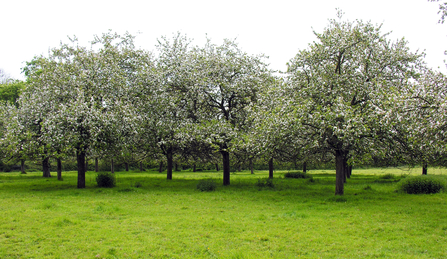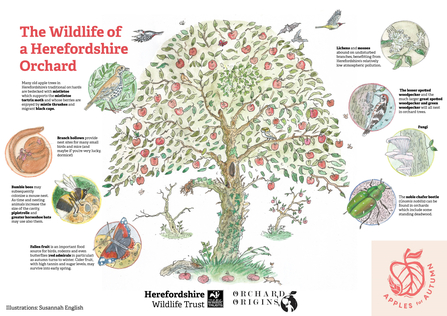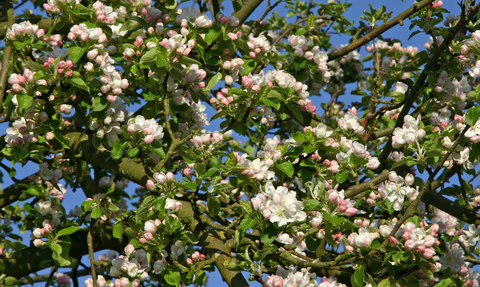
Apple Blossom (c) Trevor Hulme
Where to see orchards in blossom
Though many traditional orchards have been lost from our landscape, Herefordshire Wildlife Trust still manages several orchard nature reserves. As well as looking absolutely beautiful when the trees are covered in blossom in April, traditional orchards are also fantastic for wildlife.
Common Hill
Common Hill in spring is a delight. When the apple orchard at Old Cider House is in blossom, the cowslips and early purple orchids are on display in other areas of the reserve. The old fruit trees are useful vantage points and singing perches for chaffinches and thrushes with tawny owls making an appearance.
Bodenham Lake
Beside the lake at Bodenham there are two orchards that have been cultivated since the 1700s. They are stocked with cider and desert apples as well as some perry pear, cherry, greengage and walnut trees. Blossomtime extends for quite a number of weeks as one fruit species follows another into flower. The crevices and gnarly twigs on these old trees make ideal nesting sites, insect homes and bear wildlife-attracting lichens.
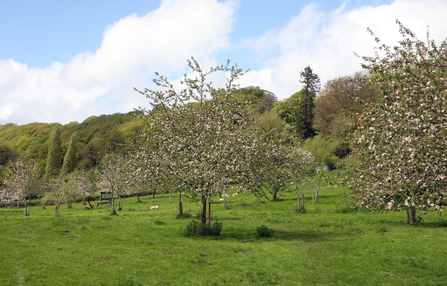
Bodenham Lake Orchard (c) Trevor Hulme
Hampton Park Road Meadow
Lying on the outskirts of Hereford, this reserve is a mixture of grassland with a scattering of mature as well as recently planted apple trees – their flowers adding a pink and white hue to the reserve in April. The older trees host a range of invertebrates such as spiders with bats roosting in the hollows.
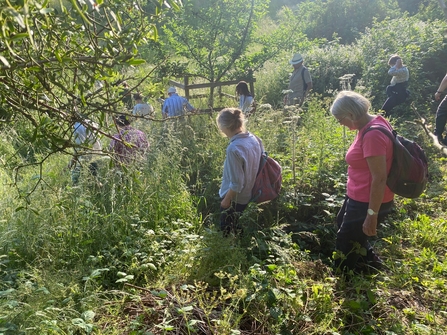
Hereford City Branch field meeting at Hampton Park Meadow (c) Anne Cottringer
Pool Ellocks
An orchard has been here on this site close by to Goodrich since 1890 and what we see now represents a typical but vanishing Herefordshire habitat. To maintain the orchard it’s been planted with new perry pear and cider apple trees of traditional varieties. There’s Bergere, Black Norman and Early David cider apple trees plus Bartestree Squash, Brinari, Greggs Pit and Treegar perry pear varieties.
The Sturts - North
On the higher ground of this floodplain meadow, there’s an old orchard of traditional cider apple varieties, providing nectar and pollen for bees and other insects early in the year. The herb-rich grassland has a wealth of spring and summer flowers with pale pink flowers of the cuckooflower making an early appearance.
